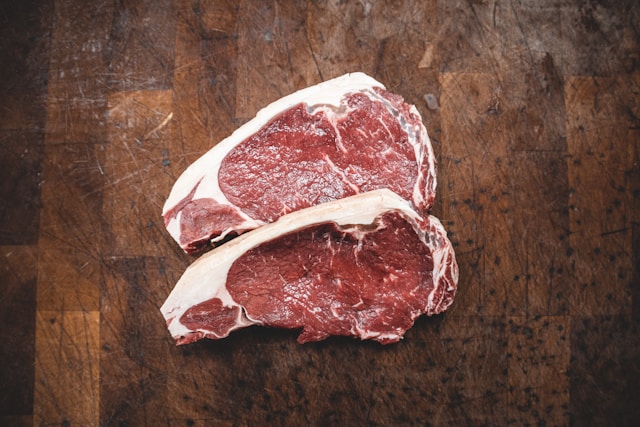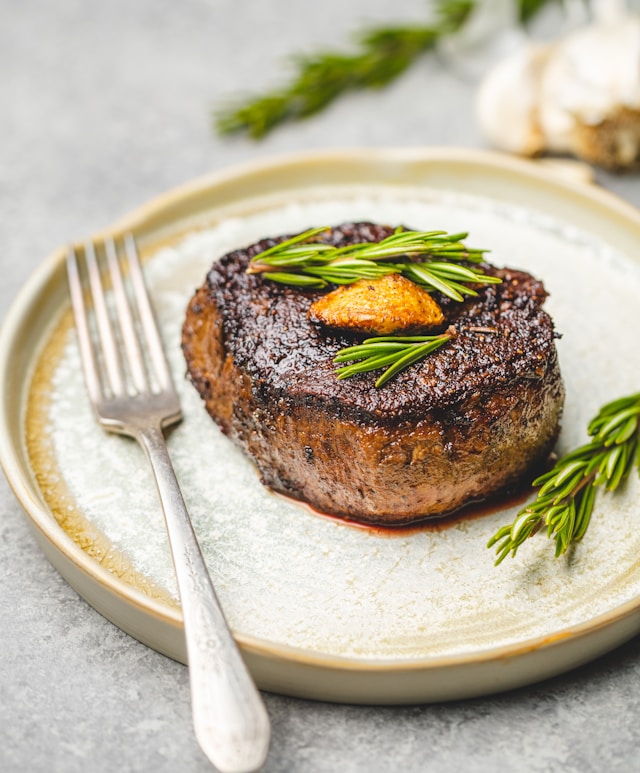Beef is one of the most delicious foods on the planet. People wax lyrical about steak and can spend hundreds of dollars to obtain the best cut.
However, the difference between the quality of beef you get at the restaurant and cooked at home can be massive. When you’re in the steakhouse, every mouthful is pure bliss. But when you try to replicate the morish taste at home, you feel robbed. “The main problem is the way we prepare beef in the kitchen,” says Easy Drain, a company that invests in better kitchen crockery. “Most people are using methods they were taught growing up instead of what the professionals actually do. There’s an art to it.”There’s no denying that statements like this are true. Many people don’t understand how to work with beef effectively and wind up with disappointing results that never taste quite like what professionals can produce. To make the matter even more confusing, everyone starts with the same ingredients. The beef that wholesalers provide to restaurants is identical to what appears in plastic packets in the stores. There’s no difference in where it came from (after all, the grocery store also had to buy it wholesale). Therefore, the problem isn’t with the meat itself. It’s how we prepare it once it is in the home. So, what’s the key to working with beef? How can you prepare it properly? Here’s what to do:
Choose The Right Cut For The Dish
The first step is to select a cut that complements the dish you want to cook. Which you choose will have a significant effect on how tasty the meal winds up being.
● Ribeye – best for searing in a hot pan with a little oil
● Filet mignon – the most tender cut, ideal for pan searing or grilling medium-rare
● Skirt steak – slightly thicker cut ideal for marinades and sauces
● T-bone steak – a combination of filet mignon and New York strip, offering a varying texture and flavors for the best of both
● Flank steak – one of the leaner cuts suitable for turning into ground beef or adding to fajitas.
Of course, you can make any beef cut taste great, as long as you prepare it properly. The tougher cuts require more marinating and salt to draw out the moisture and break down some of the fibers that make them chewy
Look For Marbling

Another thing you want to do when selecting steak is to look for marbling. In the past, steak was leaner, but today, most ranchers raise cattle with the aim of increasing the fat content in the meat.
Marbling is beneficial because it adds a lot of flavor, particularly when you combine it with herbs and spices. The natural fats in the meat help it cook better and make it more tender than if it was just pure protein. It also gives you run-off that’s great for when you want to make a sauce or gravy.Marbling takes the form of white fatty streaks that run through the meat. The more of these you can see penetrating the cut, the more likely it will be tender and more closely replicate what you get in a restaurant. You want to be careful, though, according to Easy Drain. “Beef tends to give off a lot of fat and that can be a problem when you’re trying to cook certain types of dishes. While it might be easy to collect the run-off from steak, trying to drain ground beef grease is significantly more challenging. Most people don’t have the tools they need to do it effectively, without sending a load of grease down the plughole.”As such, if you’re cooking a ground beef recipe, you might want to check your oil requirements. Unlike a steak, mince doesn’t require as much oil to keep it lubricated or even add flavor, since you’ll be combining it with herbs, spices, and veggies. Thaw It WellYou also want to ensure that you thaw your beef properly. The best approach is to move it from your freezer to your refrigerator and leave it there for a couple of days for all the ice to melt. If you don’t have that kind of time, use the cold water method. Here, you place the beef in a big bowl of water and let it defrost slowly over the course of a few hours. Defrosting it in this way prevents the thawing process from damaging the meat as much. You can try thawing beef in the microwave, but we wouldn’t recommend it. Most microwave ovens heat beef unevenly, causing some parts to cook while others remain frozen. Let The Meat Sit At Room TemperatureOnce you thaw the meat, the next step is to let it warm to room temperature. Cooking it straight from cold can stress the muscle fibers it contains, causing them to contract and become stiff. Professionals call this process “tempering.” You want to leave it on the kitchen side for around 30 minutes before putting it in the pan. The more the temperature within the meat becomes uniform, the more likely it will cook evenly and predictably. Add Plenty Of SaltPerhaps the biggest restaurant secret that makes their beef taste so good is the huge quantities of salt they add. It helps to distribute moisture throughout the meat, making it taste better throughout. Don’t be afraid to add a lot of salt before cooking. If it’s too much, you can always remove it before you start cooking. You don’t need to use any special salt either. However, you can use a salt rub or mix that contains various herbs and spices to impart more flavor to the meat. If you are worried about blood pressure, try using potassium-based salt instead. It doesn’t contain sodium and therefore, doesn’t have the same effects on your blood vessels.
Use A High at For Searing

You also want to start cooking the meat at a high heat. If you turn down your hob too much, the juices will flow out and you’ll wind up with a piece of meat that tastes like an old boot. Ideally, you want to cook beef over a gas flame. However, if you only have an electric oven, turn it up to the maximum and preheat the pan and oil first.Sear the meat until you get a nice crust. This will help lock in the flavors and prevent the juices from flowing out.How long you cook the beef depends on your preferences. You may want it rare, or you might prefer it more cooked. However, if you are searing, you don’t want to cook for too long as the juices in the center will eventually find their way out of the meat.
Cook For A Long Time If You Want Tenderness
If you follow the steps outlined above and choose a quality cut of meat, you will get a meal that melts in the mouth. However, not all beef is the same. While some cuts will give you that restaurant-style Fortunately, if you are stuck with a piece of meat that doesn’t want to tenderize, you can stick it in the slow cooker and leave it all day. The heat will eventually break down all the tough tissues in the meat, making it fall apart the moment you start chewing it.
Some restaurants that sell Philly steak use this technique to make their fillings as soft as they can. Some even cook the beef overnight to get the texture right and ensure the product is fresh.
Let The Meat Rest
Once you finish cooking the meat, let it rest for five to ten minutes. This practice gives the juices inside the meat time to redistribute throughout the tissue and, sometimes, absorb back into it.
You should notice the difference between meat that’s been left to rest, and what you eat immediately. That’s why it can sometimes take half an hour for an order to arrive in a quality steak restaurant. It indicates that chefs cooked the food fresh and then allowed it to rest until it was ready. Serving it too soon could have harmed the taste.
Don’t Put Too Much Cuts In The Pan
Finally, avoid the temptation to jam too many pieces of beef together in the pan. The goal is to sear the meat (in most cases), not to steam it.
Steaming inevitably occurs when you place many pieces of meat side-by-side because steam leaves the meat and travels immediately around the cooking area. Stock also leaks from the underside of the meat, causing it to give off even more steam.
Wrapping Up
In summary, if you follow these tips, you are much more likely to get a beef dish that doesn’t disappoint. However, you need to take your time and do things methodically. Simply picking up and cooking a piece of beef and hoping for the best usually won’t wor



